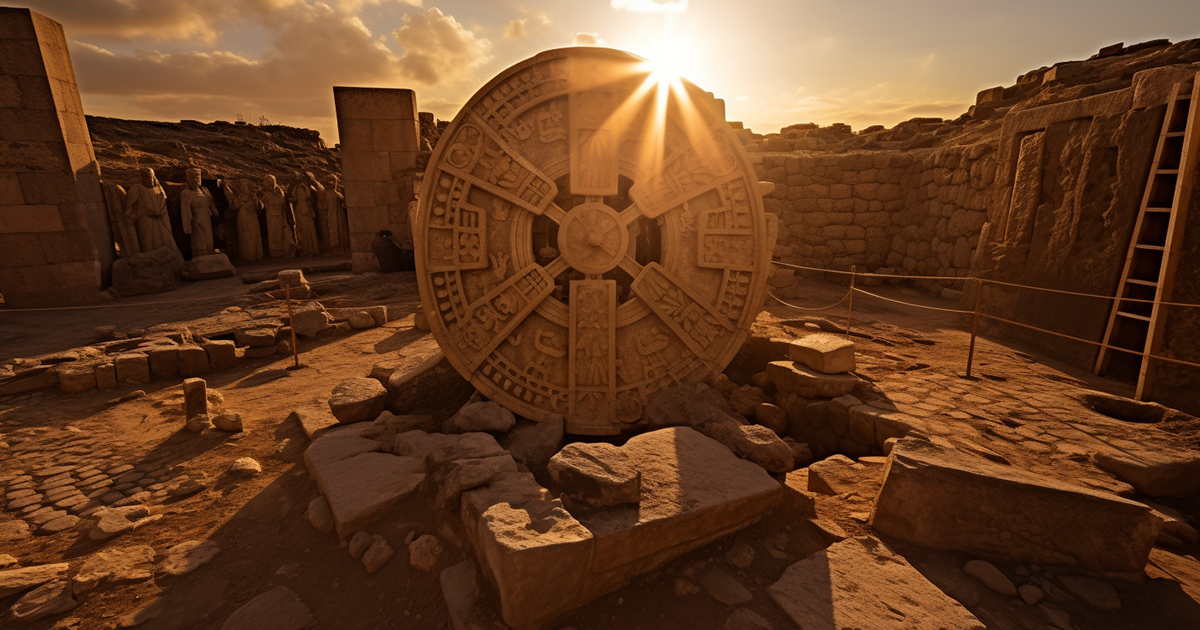Hidden in the vast expanse of Southeastern Turkey lies a remarkable discovery that has captivated the field of archaeology. Revealed by dedicated excavators, Gobekli Tepe, the oldest temple complex in the world, emerges as a key to our distant history, challenging traditional views on early human civilization.
Rooted back to the 10th Century BC through carbon dating, Gobekli Tepe predates the rise of language and primitive societies by an astonishing 6,000 years. This revelation has the potential to reshape our understanding of early human achievements.
Contrary to the conventional image of hunter-gatherers as small nomadic groups, Gobekli Tepe showcases ancient communities coming together in large numbers under a central authority to collaborate on monumental projects involving the transportation and crafting of massive stone pillars on an unprecedented scale.
What adds to the intrigue of Gobekli Tepe is its enigmatic purpose. It stands out from being a typical settlement, lacking any signs of domestic life. The speculation surrounding its function leans towards a ritualistic significance, yet the exact nature of these rituals remains veiled in mystery.

The uniqueness of Gobekli Tepe lies in its ancient origins. With a possible age of 12,000 years, as suggested by radiocarbon dating, it predates established human civilizations by a monumental 5,000 years. This raises a fundamental question: how did early people, potentially still in a hunter-gatherer stage, accomplish such a grand construction?
The site features intricate carvings depicting a variety of animals, including non-native species. Could these carvings symbolize creatures from a past era or perhaps hint at tales like Noah’s Ark from biblical narratives? The mysteries only deepen.
Among the most puzzling elements of the site are the gigantic monolithic pillars. These pillars, with anthropomorphic features such as slender arms and symbolic belts, have become objects of fascination, possibly representing deities, ancestors, or revered figures, yet their true meaning remains elusive.
Interestingly, the builders of Gobekli Tepe used the site for astronomical observations over approximately 1500 years. Some suggest a connection to the Signis constellation, a recurring motif in the mythologies of various ancient cultures.
The notion of ancient beings from distant galaxies is not new, and the alignment of Gobekli Tepe with a specific constellation sparks intriguing thoughts about the origins of its creators. Could they have aimed to convey a message to future generations, hinting at their celestial lineage?
In more recent times, modern science has also turned its gaze towards the Signis constellation, noting peculiar dimming and fluctuations in one of its stars. Certain scientists propose that these anomalies may be linked to an extraterrestrial megastructure. Is there a correlation between these celestial mysteries and the ancient enigmas of Gobekli Tepe?
When reflecting on the significance of Gobekli Tepe, one undeniable fact emerges: this ancient site leads us back to our origins and the universe. It challenges our assumptions about the capabilities of early humans and encourages us to explore the possibility of extraterrestrial connections to our past.
To conclude, Gobekli Tepe stands as an enigmatic testament to human ingenuity and the unresolved mysteries buried beneath the sands of time, waiting to be unearthed by curious minds.
